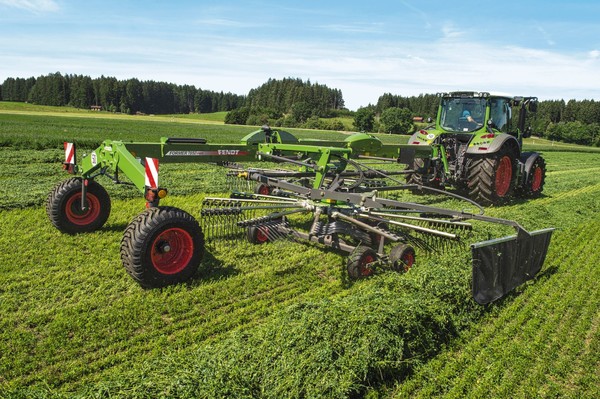
Fendt: the "Lotus" and "Former" haymaking models
The Fendt Lotus hay tedder range consists of a mounted model, the Fendt Lotus 770 with a working width of 7.7 metres and top link attachment, and two towed models, the Lotus 1020T and 1250T with working widths of 10.2 metres and 12.5 metres respectively. The pride and joy of this line of machines are the Performance tines (of different lengths) which, featuring a wide pick-up angle and flat surface (outermost tine), allow delicate work to be carried out and ensure maximum crop aeration.
The tines of the Lotus hay tedders," explains Fendt in a technical note, "offer the user the possibility of changing their position for edging or night work. Among the models of the Lotus range, the 770 stands out for its Stabilo frame, which is designed to ensure optimum stability thanks to its trapezoidal structure. In the towed models, the pivot point is set back from the tractor to provide ample manoeuvrability.
The Fendt Former range of rakes includes single-rotor machines with working widths from 3.4 to 4.5 metres, two-rotor machines (with central or side swath) from 5.75 to 10 metres and large four-rotor machines with working widths from 12.5 to 14 metres. Common to the entire Former series is the possibility of adjusting the cam, thus allowing the operator to anticipate or postpone the lifting of the tines (depending on requirements and forage).
Thanks to the cardanic suspension of the rotors, the multi-rotor rakes adapt to the morphology and roughness of the ground, while at the headland the Jet technology lifts the rotors first at the front, then at the rear, thus protecting the machine, the swath and the sward. Also on the multi-rotor models, the SteerGuard protected steering system ensures optimum tractor tracking in the field and on the road. The four-rotor rakes are equipped with ISOBUS functions, setting memory, automatic harvesting height control and correct rotor overlap control.








